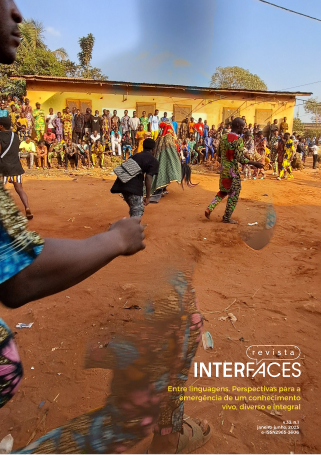A “Ortopedia Arquitetônica” e a invisibilidade da mulher no espaço habitado
The “Architectural Orthopedics” and the invisibility of women in the inhabited space
DOI:
https://doi.org/10.60001/ricla.v33.n1.10Abstract
As instituições reverberam as questões do patriarcado e da subordinação do corpo feminino que são contínuas em culturas cis-heteronormativas. A reclusão de seres desviantes passa a ter como cenário prisões para corpos masculinos, pois as mulheres configuravam assunto a ser cuidado pela Igreja. O aprisionamento de corpo feminino se tornou demanda com o advento da sociedade, e o claustro passa a ser representado em adaptações de prisões masculinas para detenção de mulheres. As condições da prisão feminina devem ser questionadas pelo feminismo de vanguarda quanto à utilização da antropometria masculina em projetos arquitetônicos tendo em vista a urgente necessidade de considerar a mulher formadora de opinião, independentemente da sua situação legal. Este artigo se propõe a provocar reflexões sobre a produção do arquiteto assujeitado por valores simbólicos que são refletidos nos planejamentos espaciais, além de trazer à baila a existência da mulher como detentora de direitos, ainda que delimitados pelos muros da prisão.
Palavras-chave: Arquitetura e gênero. Arquitetura feminista. Prisão de mulheres.
Abstract
Institutions reverberate issues of patriarchy and the subordination of the female body that are ongoing in cis-heteronormative cultures. The confinement of deviant beings began to take place in prisons for male bodies, as women were a matter to be taken care of by the Church. The imprisonment of the female body became a demand with the advent of society and the cloister began to be represented in adaptations of male prisons to detain women. The conditions of female prison must be questioned by avant-garde feminism regarding the use of male anthropometry in architectural projects in view of the urgent need to consider women as opinion makers, regardless of their legal status. This article aims to provoke reflections on the production of the architect subject to symbolic values that are reflected in spatial planning, in addition to bringing to the fore the existence of women as holders of rights, even if delimited by prison walls.
Keywords: Architecture and gender. Feminist architecture. Women prison.
Downloads
Published
Issue
Section
License

This work is licensed under a Creative Commons Attribution 4.0 International License.
O envio dos trabalhos implica a cessão sem ônus dos direitos de publicação, inclusive em versão eletrônica online. Todos os diretos provenientes da venda da revista ficam cedidos à Revista InterFACES. A republicação dos trabalhos deve mencionar a publicação original em Revista InterFACES.

